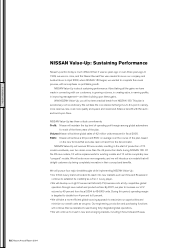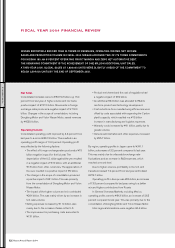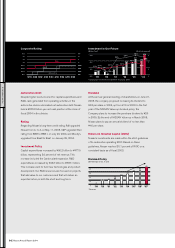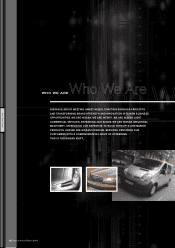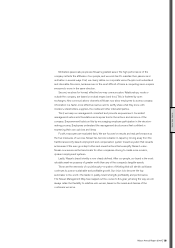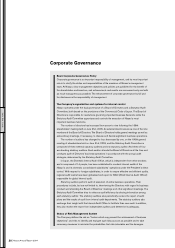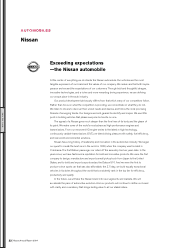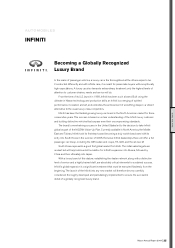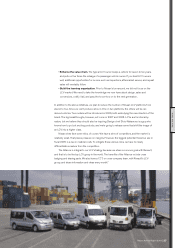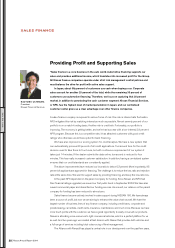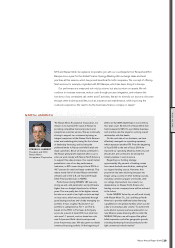Nissan 2005 Annual Report Download - page 22
Download and view the complete annual report
Please find page 22 of the 2005 Nissan annual report below. You can navigate through the pages in the report by either clicking on the pages listed below, or by using the keyword search tool below to find specific information within the annual report.
Nissan Annual Report 2004
20
Basic Corporate Governance Policy
Corporate governance is an important responsibility of management, and its most important
role is to clarify the duties and responsibilities of the members of Nissan’s management
team. At Nissan, clear management objectives and policies are published for the benefit of
the shareholders and investors, and achievements and results are announced early and with
as much transparency as possible. The enhancement of corporate governance by full and
fair disclosure is the responsibility of management.
The Company’s organization and systems for internal control
Nissan operates under the dual governance of a Board of Directors and a Statutory Audit
Committee, both based on the provisions of the Commercial Code of Japan. The Board of
Directors is responsible for resolutions governing important business decisions while the
Statutory Audit Committee supervises and controls the execution of Nissan’s most
important business functions.
The number of directors has increased from seven to nine following the 106th
shareholders’ meeting held on June 21st, 2005. An external director serves as one of the nine
members of the Board of Directors. The Board of Directors holds general meetings as well as
extraordinary meetings, if necessary, to discuss and decide significant business operations.
The number of auditors has changed to four, decreased by one, on the 106th general
meeting of shareholders held on June 21st, 2005, and the Statutory Audit Committee is
composed of three external statutory auditors and one statutory auditor. And three of four
are standing statutory auditors. Each auditor attends the Board of Directors all the time and
conducts audit of Directors’ business operations in accordance with the annual audit
strategies determined by the Statutory Audit Committee.
In Japan, the Domestic Internal Audit Office, which is independent from other sections
and is composed of 14 people, has been established to conduct internal audits of the
Nissan’s and its domestic consolidated subsidiaries’ operations under the President’s direct
control. With respect to foreign subsidiaries, in order to ensure effective and efficient audits,
regional audit teams have been globalized and report to CIAO (Chief Internal Audit Officer)
responsible for global internal audit.
Statutory auditors perform audit of execution of entire business operations. Their
procedures include, but are not limited to, interviewing the Directors with regard to business
conduct and attending the Board of Directors’ meetings and other significant meetings. The
Statutory Audit Committee tries to enhance audit efficiency by sharing information among
each statutory auditor. The statutory auditors also periodically receive the report of audit
plans and the results of audit from internal audit departments. The statutory auditors also
exchange their insight with the Internal Audit Office to facilitate their own audit. In addition,
they also receive the report from independent auditors and determine its adequacy.
Status of Risk Management System
The Company defines the risk as “factors which may prevent the achievement of business
objectives,” and tries to identify and evaluate such risks as soon as possible and to take
necessary measures to minimize the probabilities that risk materialize and the damages.
WHO WE ARE
Corporate Governance


